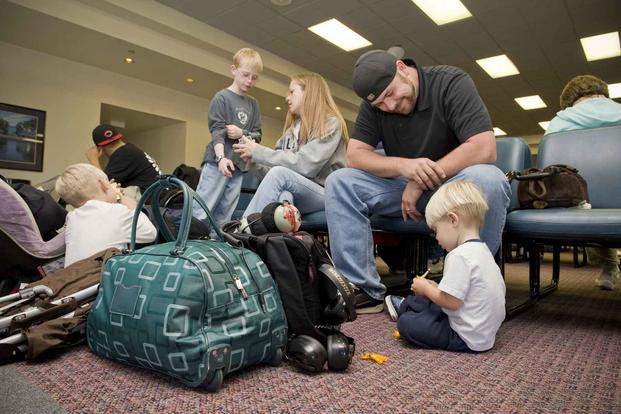More than half of U.S. military installations have now lifted travel restrictions imposed to try to contain the COVID-19 pandemic.
As of March 1, according to the Defense Department's latest statistics, 117 of 231 military installations, or 51%, have lifted their constraints.
The Marine Corps and Air Force have lifted restrictions on the greatest proportion of their installations. Out of 17 Marine Corps facilities, 15 have had travel restrictions lifted, or 88%. And the Air Force has lifted restrictions on 58 of 80 installations, or nearly 73% of its bases and Air Reserve stations.
Read Next: Navy Debunks Top 10 COVID-19 Vaccine Myths
The Navy is the most cautious of the services, with travel restrictions lifted on just seven out of 62 installations, or 11%.
And the Army has lifted restrictions on a little more than half its installations -- 36 of 68.
Three Defense Finance and Accounting Service locations have not had their travel restrictions lifted, but they've been ended for the Pentagon itself.
Twelve installations lifted restrictions this week, according to the latest update, but one -- Patrick Space Force Base, located east of Orlando, Florida -- actually reinstituted them.
Installations lifting restrictions in the last week include Joint Base Pearl Harbor-Hickam, Hawaii; McConnell Air Force Base, Kansas; Nellis Air Force Base, Nevada; Eglin Air Force Base, Florida; Ellsworth Air Force Base, South Dakota; and Vandenberg Air Force Base, California.
Before an installation's travel restrictions can be lifted, the state or country in which it is located must show a 14-day declining trend in symptoms and cases of COVID-19, and there can be no stay-at-home order in place.
The installation then must meet additional criteria, including a health protection condition, or HPCON, level below Charlie, and essential services have to be available.
Once those first steps are met, a senior leader such as a chief management officer, service secretary or combatant commander can approve lifting travel restrictions.
Service members or civilians at an installation with no restrictions in place may then travel freely to another location that also has had its restrictions lifted, according to the military's update. But if either installation has not yet met the criteria for lifting restrictions, travelers will need an exemption or waiver before proceeding.
-- Stephen Losey can be reached at stephen.losey@military.com. Follow him on Twitter @StephenLosey.
Related: Military May Revisit Making COVID-19 Vaccines Mandatory After FDA Grants Approval












